The COVID-19 pandemic sent rumour mills into a frenzy. The World Health Organization described it as a massive infodemic, capable of drowning out reliable health guidance in an over-abundance of opinion. From Argentina to South Africa we came across new home made remedies about steam and salt water, and long-debunked allegations about vaccinations.
But as fact-checkers know all too well, health misinformation is not a peculiarity of the 2020s. From rumours in Northern Nigeria about polio vaccinations almost two decades ago, to the more recent allegations that Zika and Ebola were made by humans, there is a long history of health misinformation - in times of crises, but also in the everyday. We all carry a myth passed down to us by a friend or family member in the name of tradition, beauty, or propriety.
This year at Global Fact, we (Olivia Vicol, Full Fact; Nat Gyenes, Meedan Digital Health Lab; Eric Mugendi, PesaCheck, and Dr. Theresa Amobi, University of Lagos) brought our reviews of academic evidence in conversation with fact checkers, with a view to expand upon best practices for fact-checking Health Misinformation. We took main lessons from psychology and health communication, and nuanced them with the insights of over 30 fact checkers, journalists, and academics in attendance. The goal was simple: develop a standard of care for health misinformation.

Here is some of what participants brainstormed together during the health misinformation workshop at Global Fact 7.
Production
If a rumour is already in public debate, fact check it early to prevent it from getting traction through repetition. Ever since the 1940s psychologists have found that repetition contributes to belief. Our default is to trust, and in times of crisis in particular we tend to remember the first explanations we come across.
But don’t give more oxygen to myths which would otherwise have remained unknown. Fact checking is key to the extent that it stops posts rated as false from traveling further on social media. But think about whether every claim intercepted this way is worth publicising further. Publicising every fact check on claims doubting the safety of the flu vaccine, for instance, can unintentionally give those claims much more exposure than if they had just been rated as false on social media. This exposure matters, because seeing something in the public domain can lead audiences to believe that the safety of the vaccine is doubted by a lot more people than it reality is. Social Norms Theory tells us that what we think is happening in society is a better predictor of our behaviors than what is actually happening. Our health decisions and behaviors may be predicated more on our perceptions of what dominant social norms are rather than what they actually are.
Talk with public health experts where possible to determine whether it is necessary to either a) fact check early, to prevent claims from getting traction through repetition, or b) practice strategic silence. And remember that public health experts are also a source of trust. In times of uncertainty when rumours abound, including trusted public health experts in the content and dissemination of a fact check, can help good information stand out from the noise.
Publish the sources of your information, and the last time they were updated, to account for rapidly changing information. As global health scientist and vaccine uptake specialist Nour Sharara phrased it, "science is the truth of today". This is an especially important concept in constantly changing health emergencies where treatments and public health guidelines shift based on the latest evidence. As much as you can communicate the fact that if something changes in a health context, it is actually a good thing, because it means that the public health community has stronger evidence to point towards a more informed health policy decision.
Headlines
Phrase your headlines as answers, not questions. In a time of incidental media consumption, headlines are often the only thing the public see. Simply phrasing a headline as a question risks having readers remember the inaccurate claim, instead of the debunk. This doesn’t just apply to health misinformation. It also applied to fact-checking more generally, and is of particular importance when the consequence of a fact-check might be a change or modification in a health behavior.
Content
Don’t stop at saying what’s wrong. Tell the public what is right and why. The need to have an explanation for what happens and feel in control in our environment is part of human nature. Some of us find these explanations in science, religion, or in personal experience - but there is always a why. Simply telling the public that something they know is wrong, without updating their model of events, can make it easy to fall back on past knowledge. Fill that gap. Clearly state what is wrong, but also tell your audience what is right and why. For health misinformation, finding resources that can assist with contextualizing the topic that you might be fact-checking within the larger body of health research can make this process easier. Participants in this workshop emphasized the importance of building strong collaborations and projects directly with reliable health researchers for this to be as effective as possible.
Keep unnecessary details to a minimum. No one has unlimited attention - and processing complex information is particularly difficult in times of crisis, when readers are likely to be experiencing stress. Make sure that the context and imagery you include in your fact checks are necessary to your debunk. Remember that moving images (like gifs, videos, and sidebar adverts) are particularly distracting. If your fact check includes those details, ask yourself what they add to the public’s understanding of the story.
Imagery
Don’t use graphic imagery that may trigger fear or disgust of blood and needles. A study which looked at vaccine hesitancy around the world found that many people who experience this attitude towards vaccines are also disgusted by needles and blood. We haven’t come across research that looks specifically at how graphic imagery shapes the interpretation of health fact checks. But until we do, it seems wise to not make a case for vaccination, using the imagery associated with fear of it.
Tone & Audience Engagement
Emphasise high safety, not low risk. Research reviewed by the WHO indicates that different framings of the same fact can lead to very different risk perceptions and behaviours. Focusing on the positive effects of an intervention, may be more effective than focusing on the absence of negative effects. Think of the difference between saying: vaccines save 3 million lives a year, and saying: only a very small number of people develop side effects.
Don’t ridicule the claim. Provide a safe space for individuals seeking health information or wanting to ask questions about health myths or beliefs. It is essential for audiences to feel comfortable seeking information that might correct long-standing beliefs related to their health or that of family members - a deeply personal and important issue for us all. It’s essential that, as a community of health information responders, we don’t use words like "crazy" or "outlandish" to describe the myths that we correct. We need to reduce the stigma of health information-seeking. Further, even a completely inaccurate health claim might have been shared with good intentions. It may have profound cultural or religious implications. And most importantly, we don’t have any evidence that humour is a more effective way of countering health misinformation than a neutral, facts-based piece.
For more information about research about effective responses to health misinformation and building a standard of care:
The briefing by Full Fact, Africa Check and Chequeado on the impacts of health misinformation and solutions for addressing its impacts.
Meedan Digital Health Lab’s primer on public health research frameworks and applying health fact-checking to promote health equity.
We collaborated with 53 partner organizations worldwide to design and carry out our 2024 elections projects. We extend special gratitude to our lead partners in Brazil, Mexico and Pakistan, whose work we highlight in this essay.
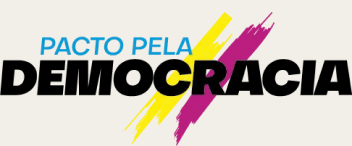
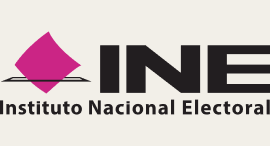

The 2024 elections projects featured in here would not have been possible without the generous support of these funders.
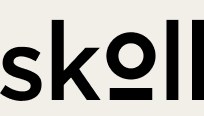
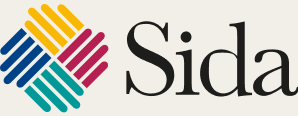

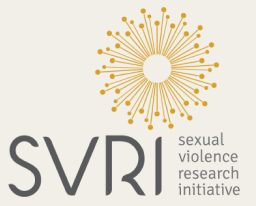
Footnotes
References
Authors
Words by
Nat Gyenes, MPH, leads Meedan’s Digital Health Lab. She received her masters in public health from the Harvard T. H. Chan School of Public Health, with a focus on equitable access to health information and human rights. She is a lecturer at Harvard University on the topic of health, digital media and human rights.








